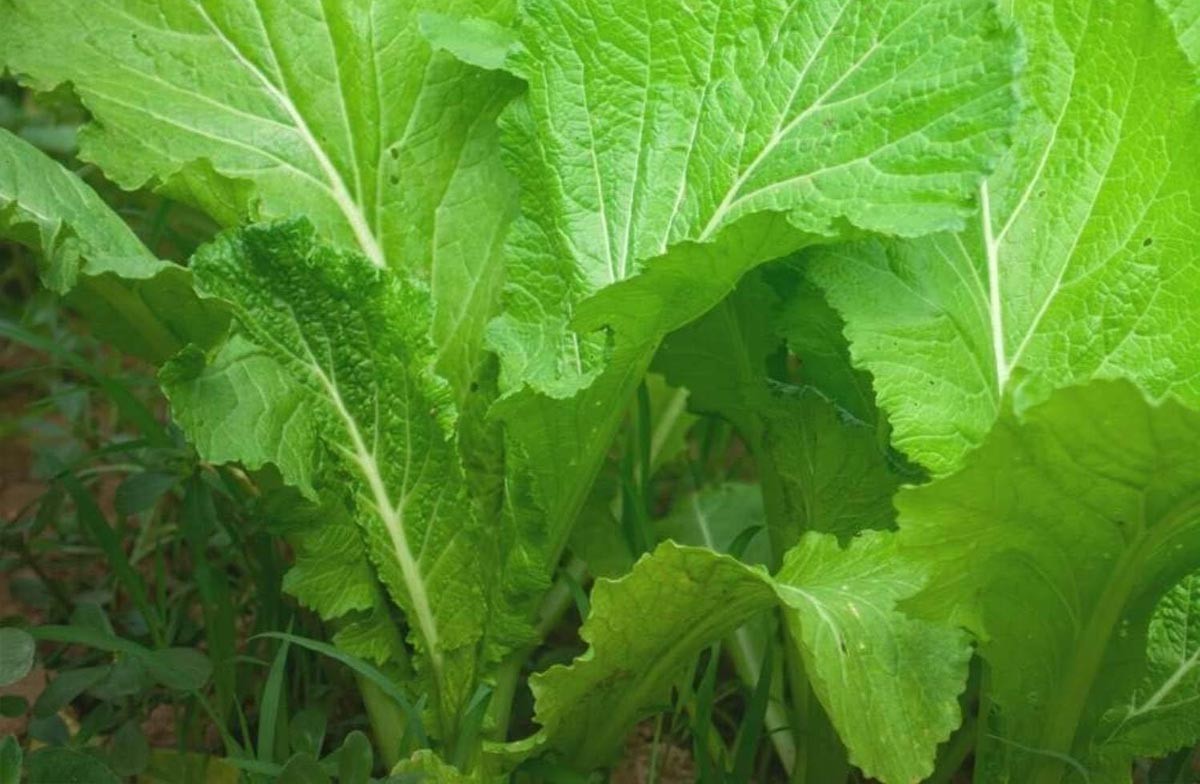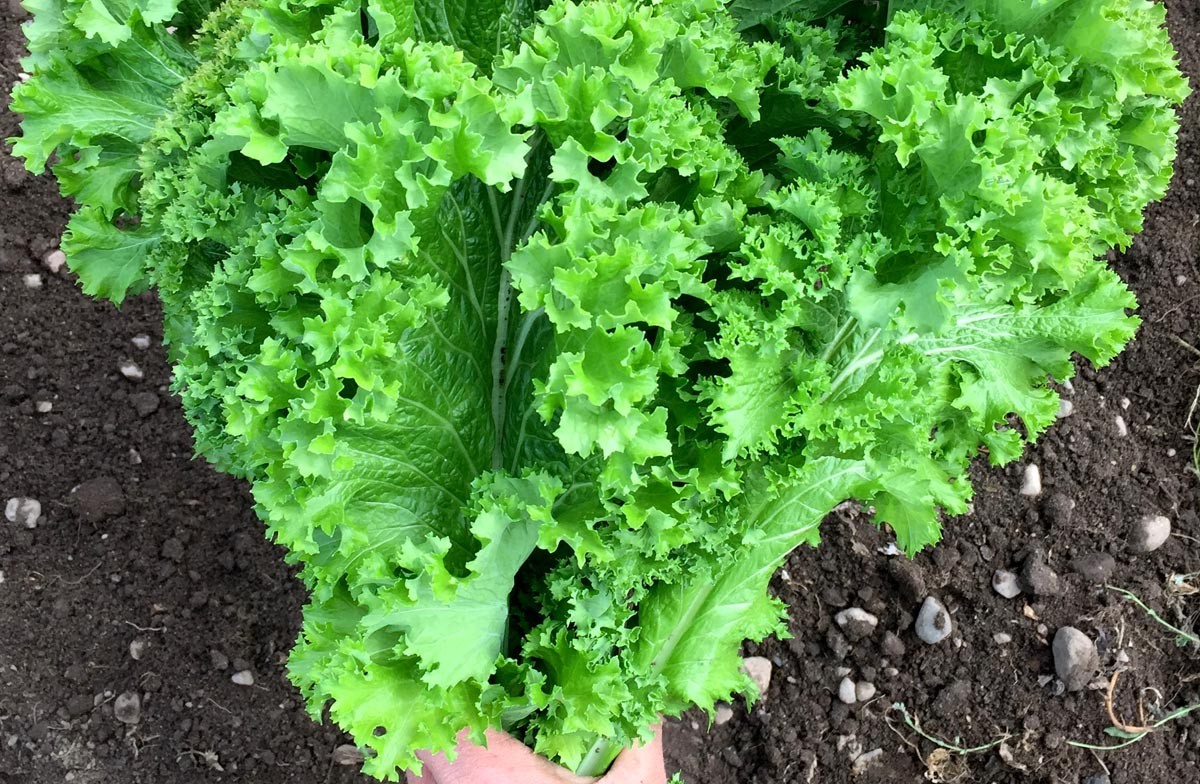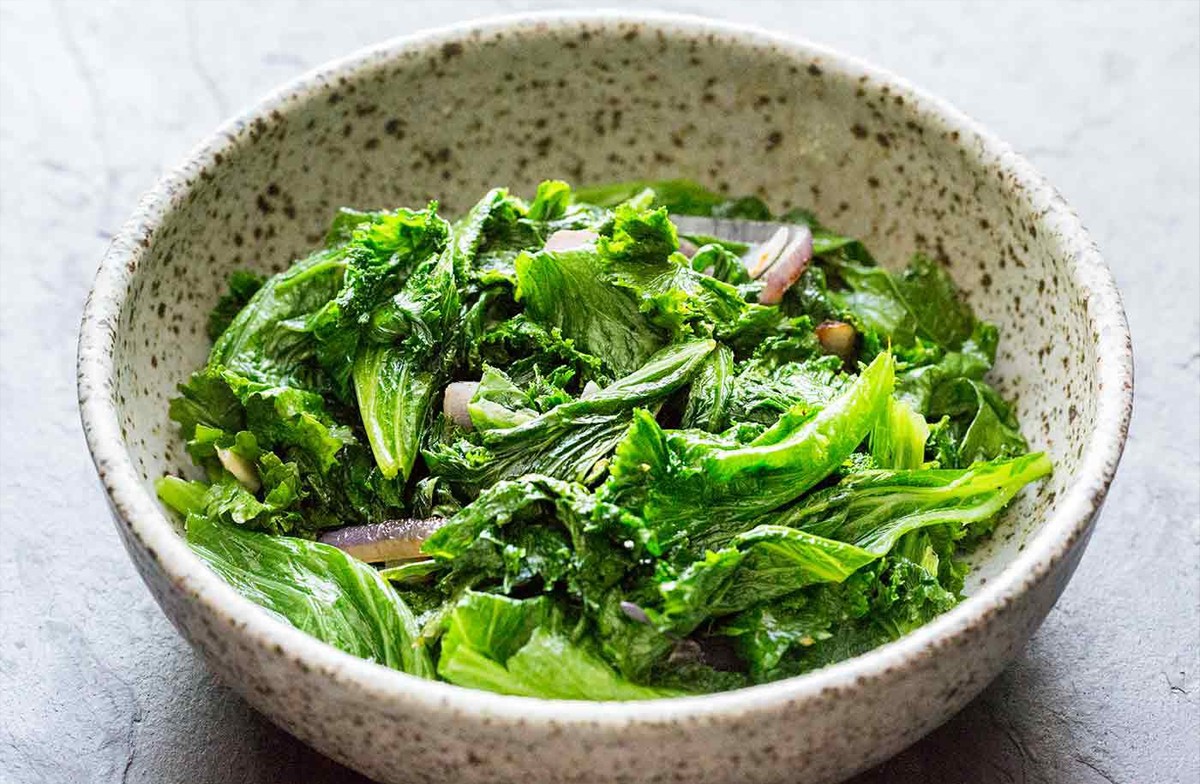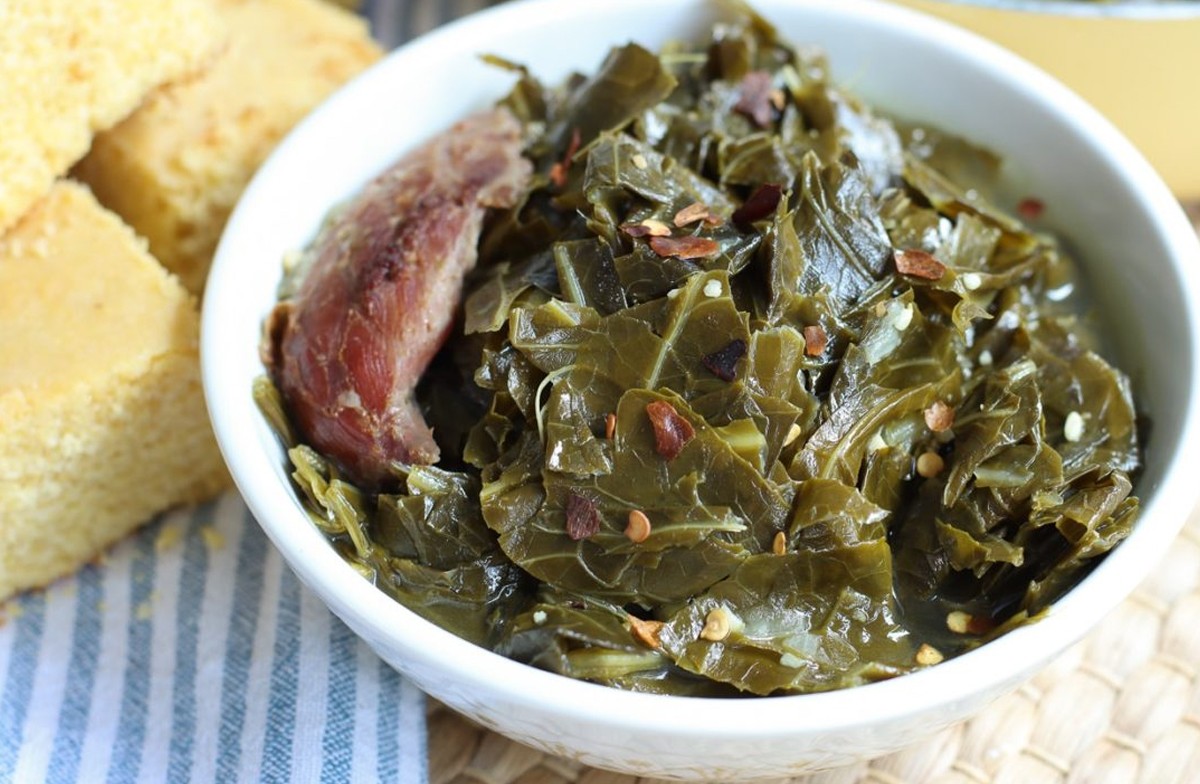Mustard Greens
The Mustard Greens plant, scientifically known as Brassica juncea, is a leafy green vegetable belonging to the Brassicaceae family. It is cultivated for its nutritious leaves, which are commonly used in various culinary dishes. The plant has broad, dark green leaves with a slightly peppery and pungent flavor.
Key characteristics of the Mustard Greens plant include:
- Appearance: The plant typically grows in a rosette pattern, with leaves radiating from a central point. The leaves may have a crinkled or frilly appearance, and the plant can reach varying heights.
- Flowers: Mustard Greens produce small, yellow flowers that are typical of plants in the Brassicaceae family.
- Growing Conditions: Mustard Greens thrive in cool weather and are often cultivated in the spring or fall. They are relatively easy to grow and can be harvested at different stages of maturity.
- Nutritional Value: Mustard Greens are rich in vitamins, minerals, and antioxidants. They are known for providing essential nutrients such as vitamin K, vitamin C, vitamin A, folate, and calcium.
- Culinary Uses: The leaves of Mustard Greens are widely used in various cuisines, especially in salads, stir-fries, and soups. The plant's pungent flavor adds a distinctive taste to dishes.
Mustard Greens Nutritional Benefits
- Rich in Vitamins: Mustard Greens are an excellent source of vitamins, particularly vitamin K, which is essential for blood clotting and bone health. They also provide a significant amount of vitamin A, vitamin C, and various B vitamins.
- Mineral Content: These greens are a good source of minerals such as calcium, magnesium, and potassium. Calcium is crucial for bone health, magnesium plays a role in muscle and nerve function, while potassium helps regulate blood pressure.
- Antioxidant Properties: Mustard Greens contain antioxidants, including beta-carotene, lutein, and zeaxanthin, which contribute to eye health and protect cells from oxidative stress.
- Fiber Content: Being high in dietary fiber, Mustard Greens can support digestive health by promoting regular bowel movements and aiding in the prevention of constipation.
- Low in Calories: Mustard Greens are a low-calorie food, making them an excellent choice for those looking to manage their weight while still obtaining essential nutrients.
- Anti-Inflammatory Effects: The compounds found in Mustard Greens, including glucosinolates and isothiocyanates, have anti-inflammatory properties, potentially contributing to overall health and disease prevention.
- Heart Health: The combination of fiber, antioxidants, and potassium in Mustard Greens may contribute to cardiovascular health by helping to lower blood pressure and reduce the risk of heart disease.
- Blood Sugar Regulation: Some studies suggest that the fiber content in Mustard Greens may assist in stabilizing blood sugar levels, making them a beneficial food for individuals managing diabetes.
In Person With Heshoutang Natural Health Members
With Heshoutang Natural Health Online Members
Fill Out the Questionnaire by yourself
Mustard Greens Pharmacological Action
While Mustard Greens are primarily consumed for their culinary and nutritional benefits, certain pharmacological actions have been attributed to the compounds found in these greens. It's important to note that research in this area is ongoing, and the following information provides an overview of potential pharmacological actions associated with Mustard Greens:
- Antioxidant Activity: Mustard Greens contain antioxidants, such as beta-carotene, lutein, and zeaxanthin, which can help neutralize free radicals in the body. This antioxidant activity may contribute to reducing oxidative stress and inflammation.
- Anti-Inflammatory Properties: Compounds like glucosinolates and isothiocyanates found in Mustard Greens have been studied for their anti-inflammatory effects. These substances may help modulate the inflammatory response in the body.
- Detoxification Support: Glucosinolates in Mustard Greens can be converted into isothiocyanates, which are known for their potential role in supporting detoxification processes in the liver.
- Cardioprotective Effects: Mustard Greens may have cardiovascular benefits, including the potential to lower blood pressure due to their potassium content. The fiber and antioxidant content may also contribute to heart health.
- Antimicrobial Activity: Some studies have suggested that certain compounds in Mustard Greens may exhibit antimicrobial properties, potentially inhibiting the growth of certain bacteria and fungi.
- Blood Sugar Regulation: The fiber content in Mustard Greens may play a role in regulating blood sugar levels, making them a potentially supportive food for individuals managing diabetes.
- Potential Cancer Prevention: Some research indicates that glucosinolates found in mustard plants may have anti-cancer properties. These compounds may influence detoxification pathways and inhibit the growth of cancer cells, but more research is needed.
How to Grow Mustard Greens
Growing Mustard Greens is a relatively straightforward process, and these leafy greens can thrive in a variety of climates. Here's a step-by-step guide on how to grow Mustard Greens:
1. Selecting the Right Variety:
- Choose a Mustard Greens variety that suits your preferences and local climate. Some common varieties include 'Florida Broadleaf,' 'Ruby Streaks,' and 'Southern Giant Curled.'
2. Choosing the Planting Location:
- Mustard Greens prefer well-drained soil with a slightly acidic to neutral pH (around 6.0 to 7.5).
- Select a location that receives full to partial sunlight. These plants can tolerate light shade but generally grow best in sunny areas.
3. Planting Seeds:
- Plant seeds directly in the garden or in containers. Space the seeds about 1 inch apart and cover them with a thin layer of soil (about 1/4 inch deep).
- If you're planting in rows, leave around 18 to 24 inches of space between rows.
4. Watering:
- Keep the soil consistently moist during the germination period. Once the plants are established, water them when the soil feels dry to the touch.
- Water at the base of the plant to prevent moisture on the leaves, which can reduce the risk of diseases.
5. Thinning Seedlings:
- When the seedlings are a few inches tall, thin them to achieve proper spacing. For mature plants, leave about 6 to 12 inches between each plant, depending on the variety.
6. Fertilizing:
- Mustard Greens are not heavy feeders, but you can apply a balanced fertilizer or compost before planting.
- If the plants show signs of nutrient deficiency, you can apply a side dressing of fertilizer during the growing season.
7. Harvesting:
- Mustard Greens can be harvested when the leaves are young and tender, typically about 4 to 6 weeks after planting.
- Harvest by cutting the outer leaves, leaving the inner leaves to continue growing. This allows for a continuous harvest.
8. Pests and Diseases:
- Keep an eye out for common pests like aphids, flea beetles, and cabbage loopers. Use organic insecticides or neem oil if necessary.
- Practice crop rotation to reduce the risk of diseases.
9. Successive Planting:
- To enjoy a continuous harvest, consider successive plantings every 2 to 3 weeks.
10. Winter Growing:
- Mustard Greens can be grown as a fall or winter crop in mild climates. They can tolerate light frost.
By following these steps, you can grow your own fresh and nutritious Mustard Greens at home. Adjustments may be necessary based on your specific climate and local conditions.
When you subscribe to the blog, we will send you an e-mail when there are new updates on the site so you wouldn't miss them.


















Comments